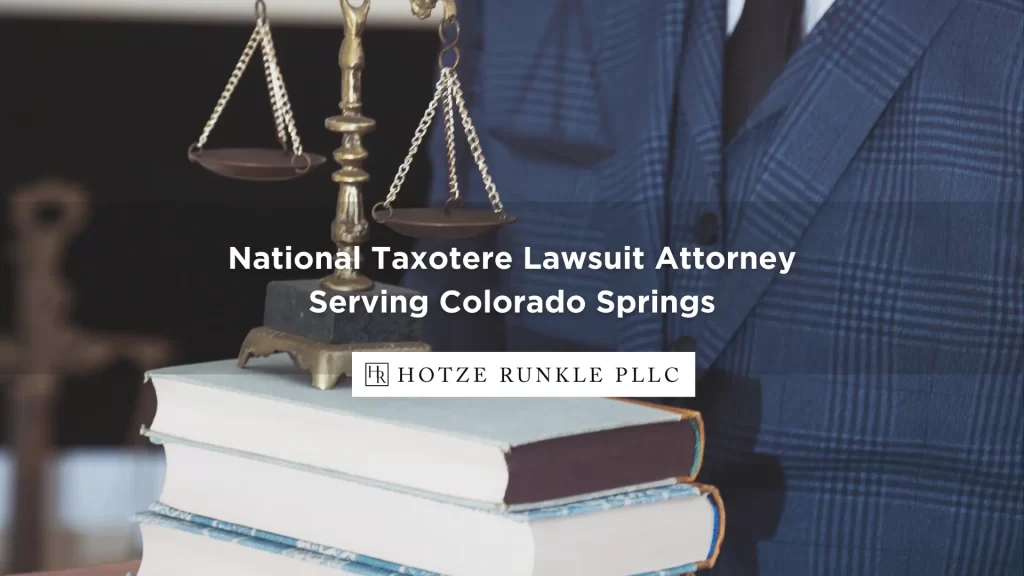
Are you a former or current cancer patient using Taxotere during chemotherapy treatment? Did you begin experiencing unusual symptoms you didn’t know could occur? If so, contact the Taxotere Canalicular Stenosis attorneys of Hotze Runkle PLLC to determine your legal options and the financial compensation you’re entitled to from the drug company.
Canalicular Stenosis is a common problem faced by cancer patients and survivors around the country. It’s a serious medical condition that can cause debilitating symptoms. Treating cancer with Taxotere can lead to emotional, physical, and economic strain. Hotze Runkle PLLC is ready to take on your case and pursue the compensation you deserve for the expenses and harm you suffered.
Symptoms You Could Experience Due To Canalicular Stenosis
Canalicular Stenosis is a condition of the canaliculus, the ocular structure responsible for directing tears from the tear duct and draining them into the nasal cavity. When the canaliculus becomes inflamed, obstructions form so tears can no longer pass through. This results in a build-up of tears on the eye’s surface, causing excessive eye-watering.
Uncontrollable and excessive eye-watering is one of the first symptoms to develop. Most cancer patients notice this unusual side effect, called epiphora, during chemotherapy with Taxotere. Allowing it to progress without seeking medical treatment could lead to Canalicular Stenosis and a range of other symptoms, including:
- Eye infections
- Eyelid swelling
- Clouded eye lens
- Blurry vision
- Central vision loss
- Sensitivity to light
- Dry eyes
Studies performed by medical researchers showed a link between the secretions from Taxotere and a patient’s tears. While the drug travels through someone’s body, it interacts with different bodily fluids. Coming in direct contact with tears as it’s passing through the canaliculus causes inflammation. Chronic inflammation eventually results in the development of Canalicular Stenosis.
Over time, the canaliculus could start to close due to obstructions and damage. At that point, there’s nothing you can do to repair this vital eye structure. Canalicular Stenosis is a permanent medical condition with no known cure. You might have some options for alleviating your symptoms, but results aren’t guaranteed, and the procedures come with significant risks.
Managing the Symptoms of Canalicular Stenosis
There are two treatment options depending on the severity of your symptoms and the structural damage to your canaliculus.
Option 1 – Dacryocystorhinostomy
During this type of invasive surgery, a doctor makes an incision between your nose and eye. Just beneath the skin’s surface, there are structures the doctor can use to create a passageway for your tears to flow so they don’t become trapped behind the damaged canaliculus. The surgeon may also place a stent to keep the new structure open and prevent the recurrence of symptoms.
Option 2 – Conjunctivodacryocystorhinostomy
This option might be necessary if there aren’t any useable structures for the surgeon to form a new passageway for your tears. Instead, they would have to insert a Jones tube, a small glass tube, over the damaged canaliculus to facilitate the adequate flow of tears towards the nasal passage.
Both surgical options are expensive and invasive. They could also lead to a range of symptoms, such as:
- Uncontrollable hemorraghing
- Significant facial scarring
- Sinusitis
- Blindness
- Displaced or migrating stent or Jones tube
- Ineffective procedure
- Tissue damage
- Chronic eye infections
- Abnormally fused tissue
You could continue treating your cancer with chemotherapy while treating your Canalicular Stenosis symptoms. However, it would be best if you speak to your doctor about the adverse effects you’re experiencing so they can stop your Taxotere regimen and choose a different drug. They can also monitor your symptoms and take the necessary steps to prevent them from worsening.
Some patients find it useful to use eye drops or ointments to find relief from some of the symptoms, such as dry eyes. Others might benefit from the doctor using a temporary stent to keep the canaliculus open. It will stay there until you finish chemo, and your doctor can remove it around four to six weeks later.
Holding the Drug Company Accountable for Their Actions
 Sanofi-Aventis first developed Taxotere in 1996 for use in cancer patients. It treats prostate cancer, lung cancer, head cancer, breast cancer, neck cancer, and more. Oral and intravenous regimens vary depending on the type and stage of cancer but typically occur once a week, once every other week, or once every three weeks.
Sanofi-Aventis first developed Taxotere in 1996 for use in cancer patients. It treats prostate cancer, lung cancer, head cancer, breast cancer, neck cancer, and more. Oral and intravenous regimens vary depending on the type and stage of cancer but typically occur once a week, once every other week, or once every three weeks.
Taxotere works by shrinking cancer cells, so they can’t spread to nearby lymph nodes or distant body parts. Although it can be successful at treating different types of cancer, it also leads to symptoms that could become severe. Sanofi knew of the risks but didn’t disclose them on warning labels at first.
The U.S. Food and Drug Administration has yet to recall the popular cancer drug; however, they now require the manufacturer to include Canalicular Stenosis and its symptoms on all labels.
To hold the drug company responsible and recover the compensation you deserve, you must follow a strict timeframe for initiating legal action in Colorado. The statute of limitations is two years. That means you must file your lawsuit within two years from the date you suffered an injury from Taxotere. Once the deadline passes, you likely won’t have another opportunity to pursue compensation from the manufacturer in the future.
You can seek multiple losses during your legal case, such as:
- Pain and suffering
- Disfigurement
- Lost wages
- Lost earning capacity
- Emotional distress
- Past and future medical bills
- Lost enjoyment of life
At Hotze Runkle PLLC, our Colorado Springs Taxotere Canalicular Stenosis lawyers will fight for the maximum monetary award you deserve. You shouldn’t be responsible for any of your past and future losses.
The pharmaceutical company negligently manufactured and sold a drug they knew was dangerous but failed to notify the U.S. Food and Drug Administration and print appropriate warning labels. When you hire us, we will work hard to hold them liable for their actions.
Contact Hotze Runkle PLLC Today
Hotze Runkle PLLC is ready to represent you in your case to recover the compensation you need to pay for your medical treatment, prescription medications, and other costs. We know the financial strain you might be experiencing, and our goal is to ensure Sanofi pays the money they owe you.
Take our Taxotere Quiz today to learn more about your legal options.